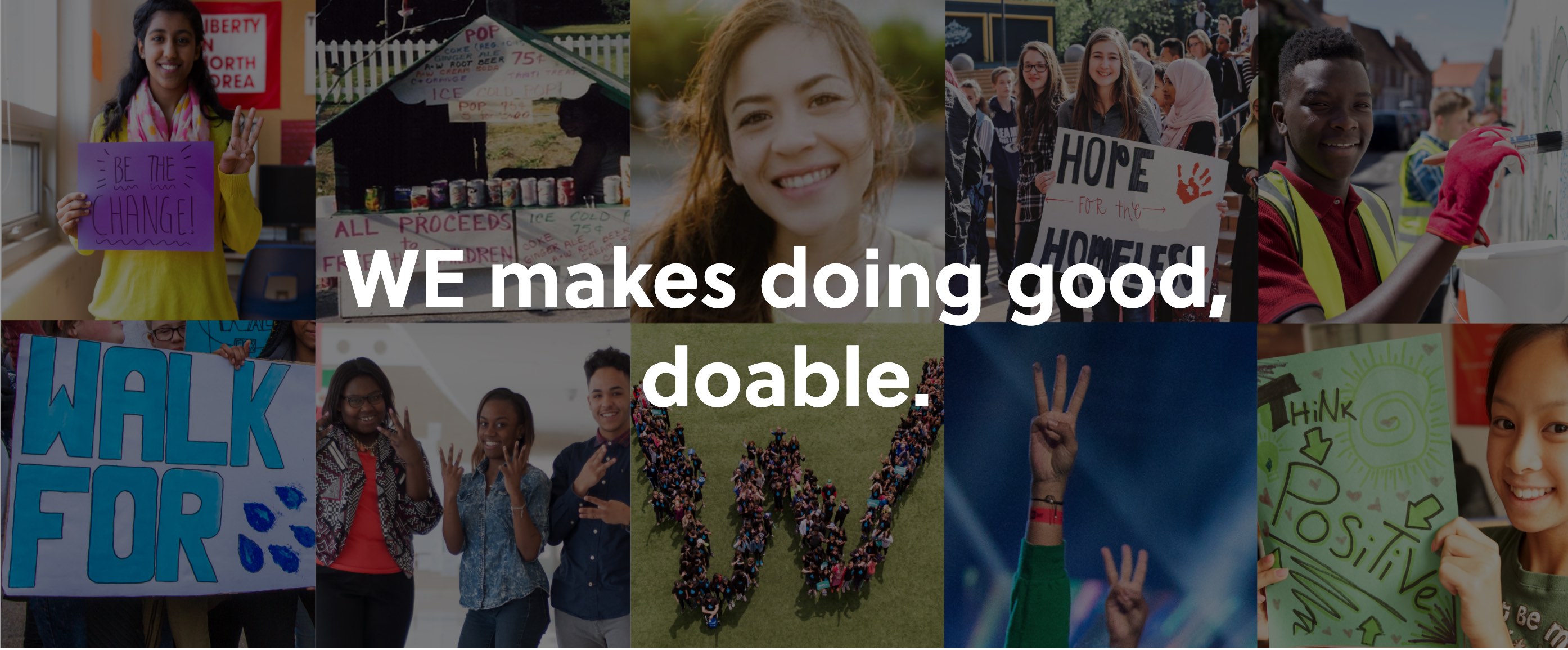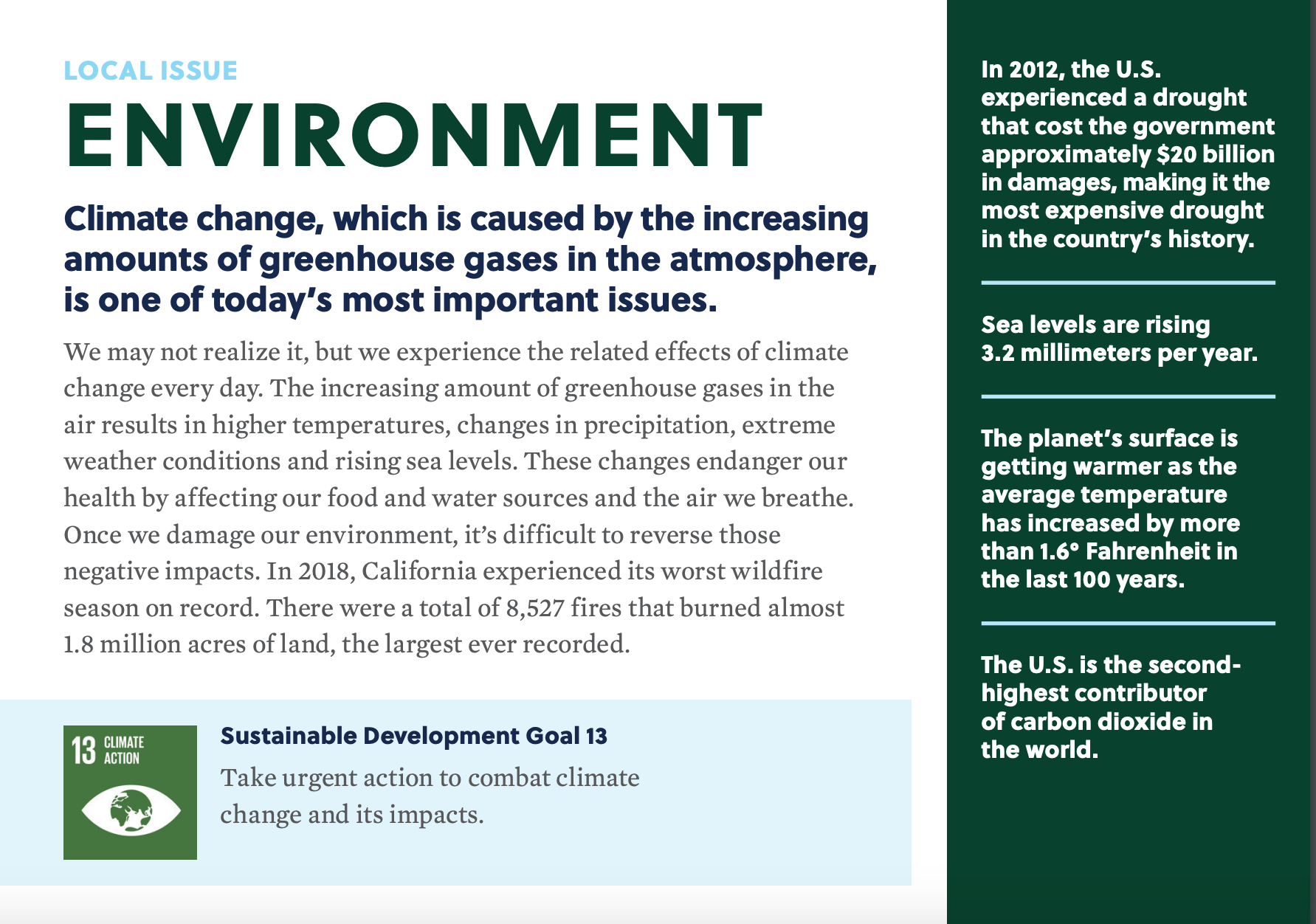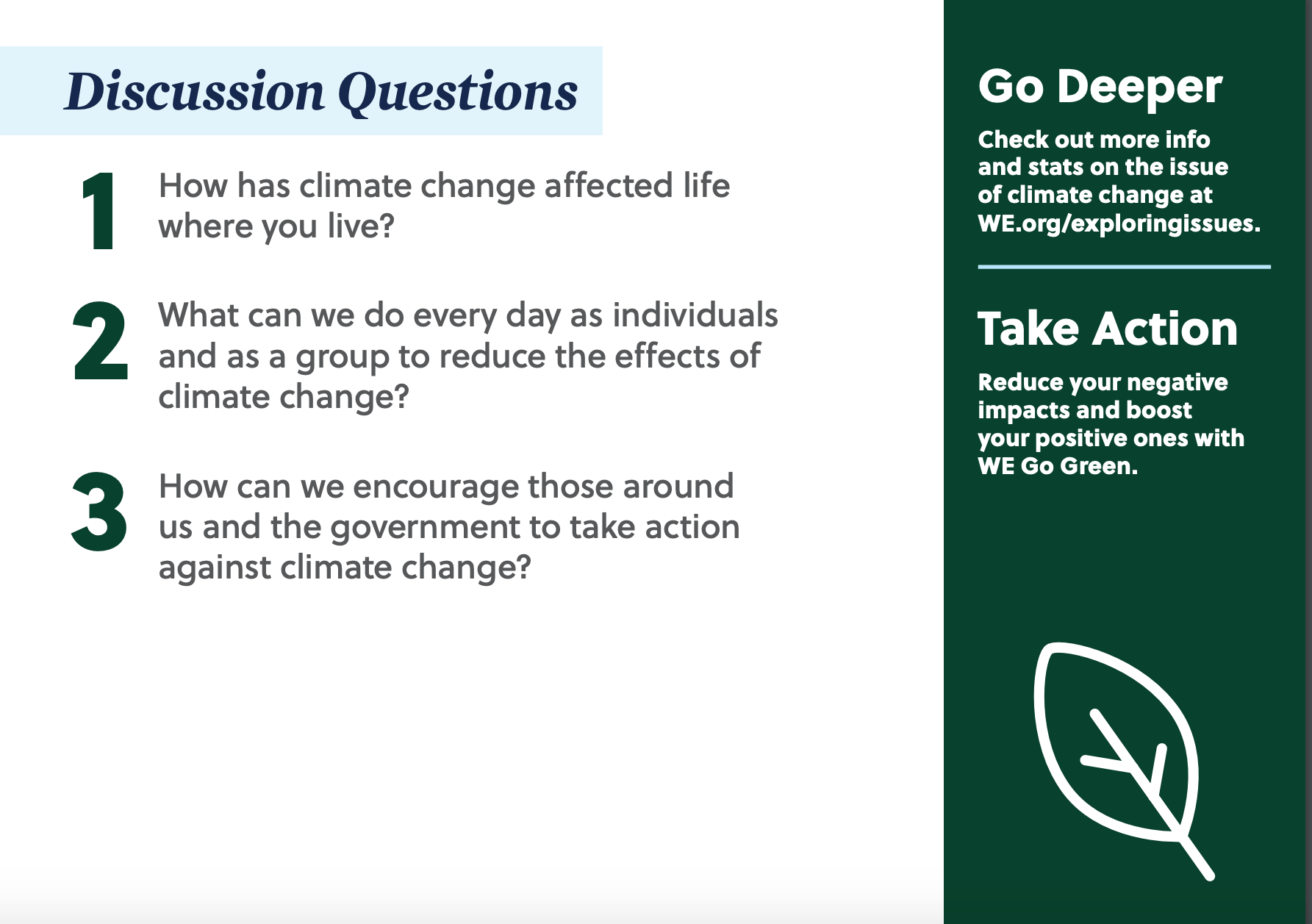By: Tara Giandomenico
I am on the path to becoming an elementary education teacher and I plan to teach second grade. I have learned that teaching our students about the 17 Global Goals is critical. Especially at a young age, children need to be aware of what’s going on in our world, and what we can do to fix it. The Sustainable Development Goals are 17 goals that should be completed by the year 2030 to make the world a better place for everyone. This includes ending poverty, ending world hunger, ending discrimination, etc. While investigating we.org I learned many different ways to teach about these goals in my future classroom.

While looking through this website, I noticed that there was an “issue cards” PDF. These are something that I plan to use in my future classroom because they are so resourceful. This PDF goes over each global issue and what it’s about. It provides discussion questions, facts, and action plans for each individual global issue. This could be great to use in my future classroom because I could assign each student to an issue card. I would form a project around it where my students have to create a project to present that discusses their assigned issue, an action plan that needs to be followed through with proof, and each of the discussion questions should be answered within the presentation. This could be so beneficial for the students because they will have a deep understanding of their assigned issue while learning about the other issues from the class. I feel that if the students are assigned to one area of focus, they will have a deeper understanding of the global issues as a whole.


I also explored on the website to where there are different courses and modules that can be taken to help learn information about each of the goals. The modules include lots of information about each goal and what the objective and purpose of it is. I looked over the poverty module and I thought that it was full of important information about attaining the goal. The modules are so helpful for teachers because they include vocabulary that pertain to each goal and it provides material and resources. Since I plan to teach the younger students, I would incorporate this into my classroom by reviewing each module and incorporating it into a class lesson. For example, I could have my students review and understand the meaning of poverty and low-income by using tools like Quizlet and Kahoot. Once the students gain an understanding of the definitions, I would prompt them to create their own story that relates to the goal and share it on Kidblog for classmates to read and comment.

I can’t wait to explore and find new ways to teach my future students about the SDG’s. Students who learn this at a young age can make a huge difference, and I can’t wait to be apart of that change.
Thankyou for reading my blog 🙂
Check out my Twitter!